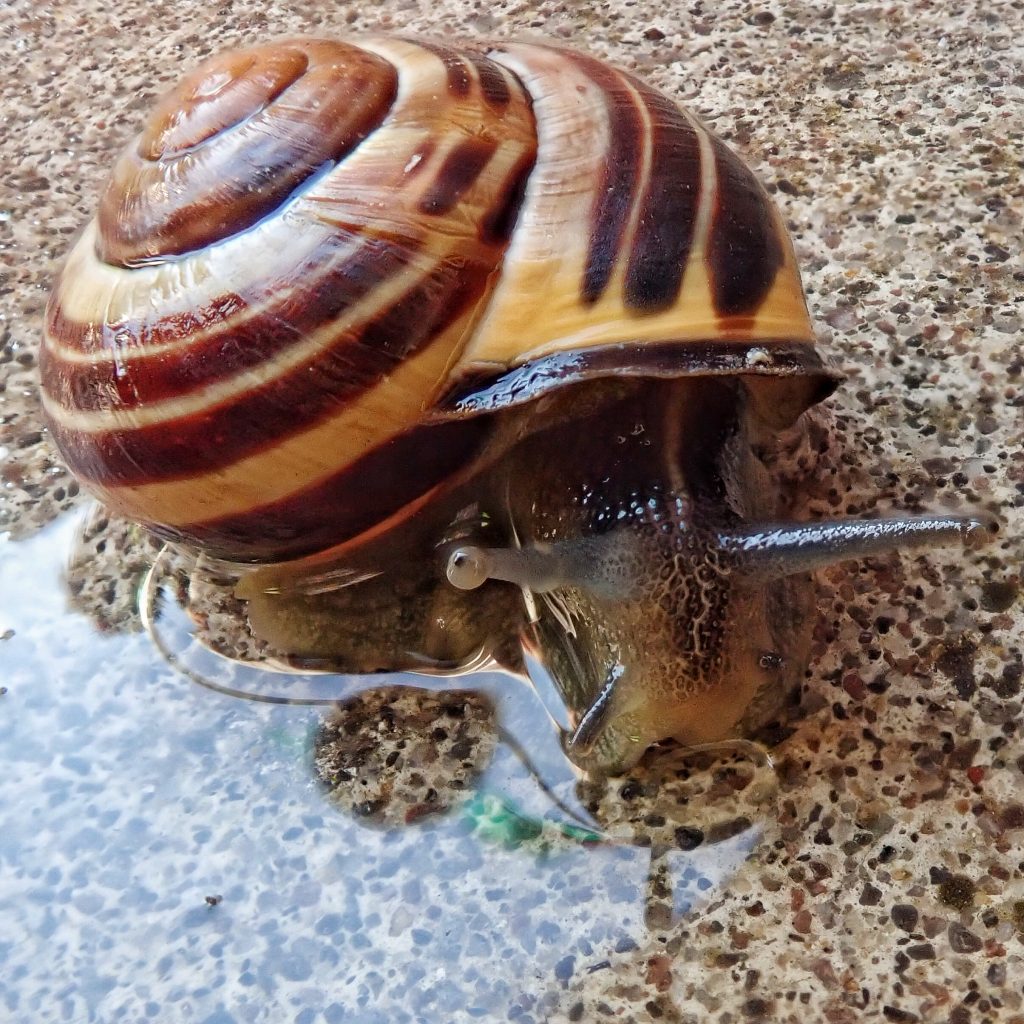
I believe these beautiful snails in the family Helicidae are Cepaea nemoralis (also known as Brown-lipped Snails and Banded Grove Snails) because, in all of the individuals that I found in this small sampling which had a developed apertural lip, that lip was brown. If they were C. hortensis (White-lipped Snails) most of them should have had a white lip, although the general similarity and extreme polymorphism (of which these 6 snails shown only represent a fraction) of both species precludes any particular individual (especially juveniles which haven’t fully developed an apertural lip) from being identified by coloration or pattern alone.
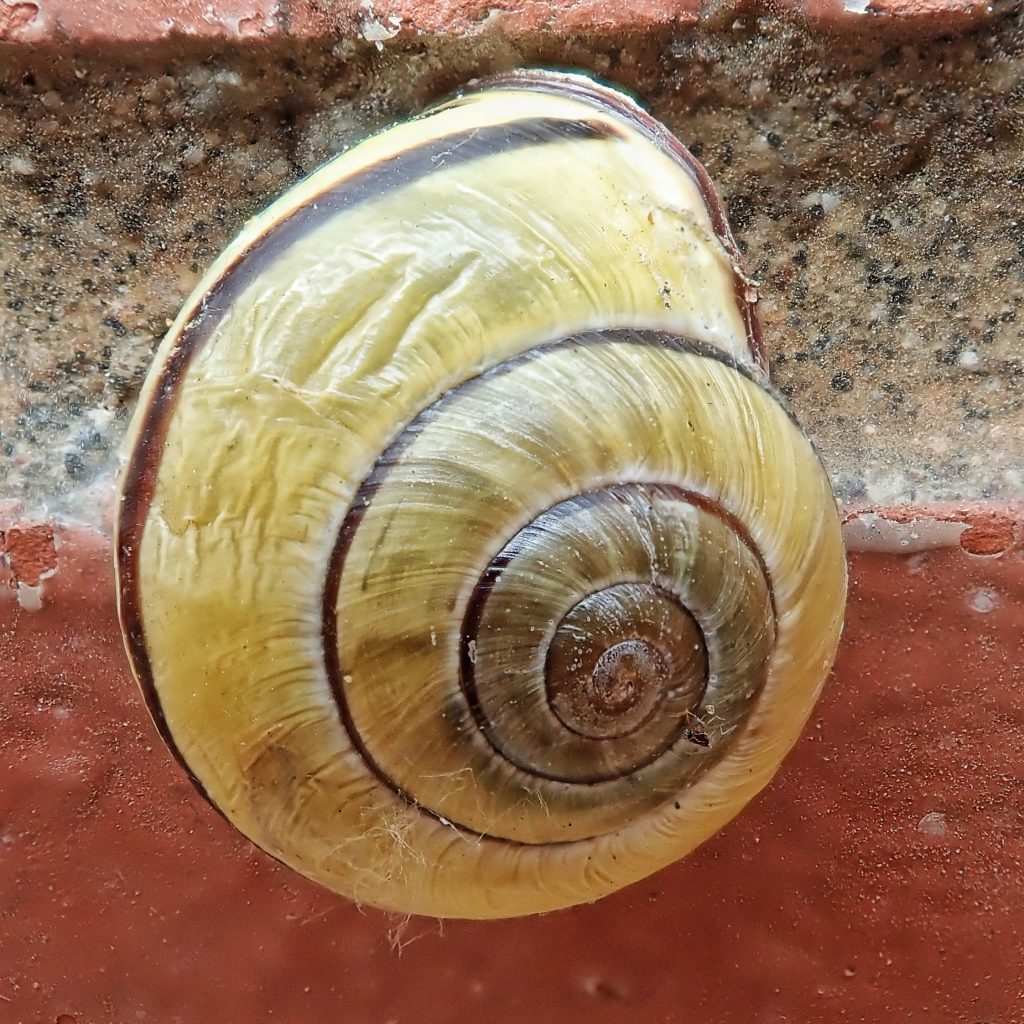
Since both species are non-native European imports, there is also the fact that, to the best of my knowledge, C. hortensis has not yet been found in Washington state, although someone on Facebook claimed quite some time ago (and I can’t remember where or when and foolishly didn’t follow up on it at the time) that they had indeed been documented in the PNW, and we all know that everything that is said on Facebook is the gospel truth from accredited sources. However I could not personally find any verification of this during my research for this post. If any of you readers have information on this subject I would be very grateful if you passed it on to me.
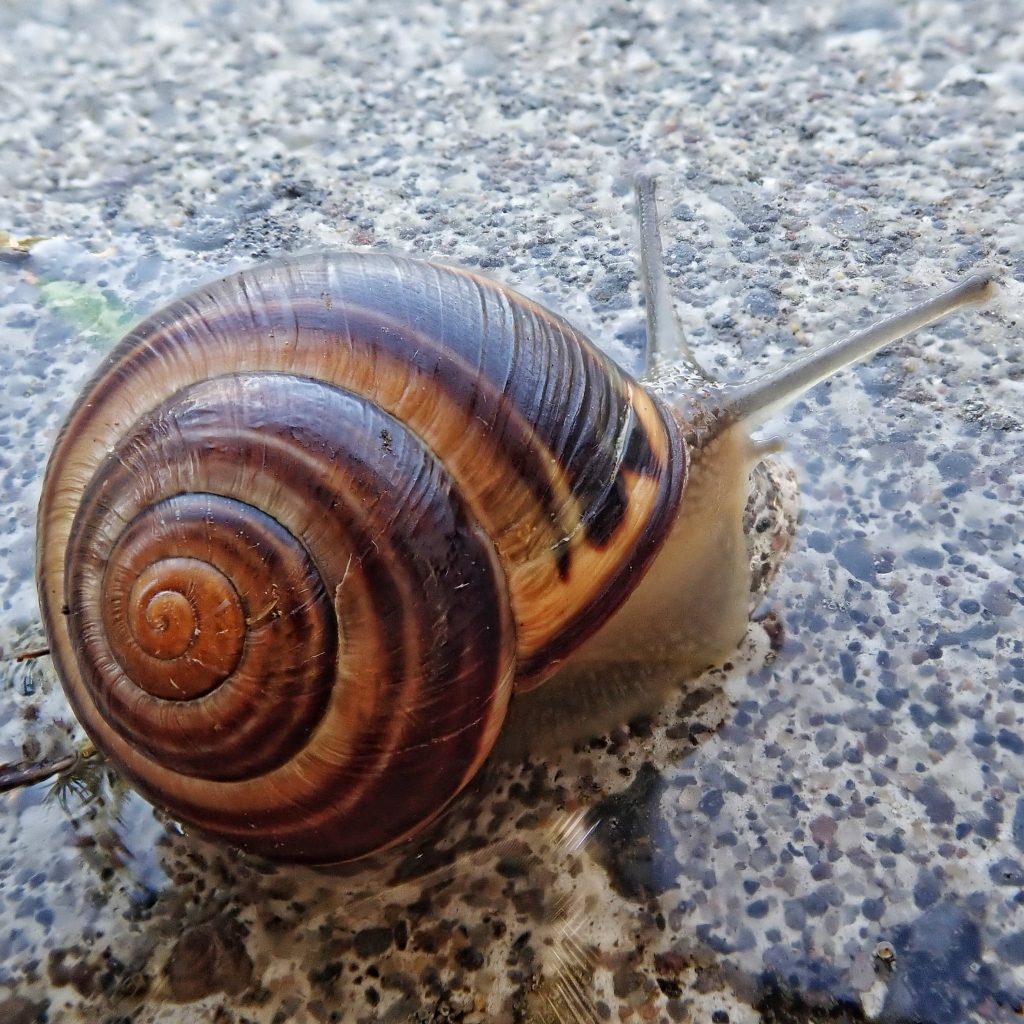
The extreme pattern and color polymorphism of this species is probably best explained by the push/pull of cryptic vs. apostatic (different than the herd) coloring. The benefits of cryptis are obvious- if they can’t see you they can’t eat you. However, a uniform camouflage throughout a population will eventually generate a particular search image in the mind of its predators, which will then be activated whenever the prey species is perceived against something that is not the optimal backdrop. This is where the apostatic morph comes in, because an individual that looks different from its conspecifics may not trigger that attack response, and could survive to pass on that genetic combination. But, since that color/pattern may not provide as effective of a camouflage, or may itself become the norm and therefore the search image of ensuing generations of predators, the survival advantage may then be conferred upon color/patterns that are apostatic to it, or merely better camouflage, ensuring that the wheel of polymorphism keeps spinning around.
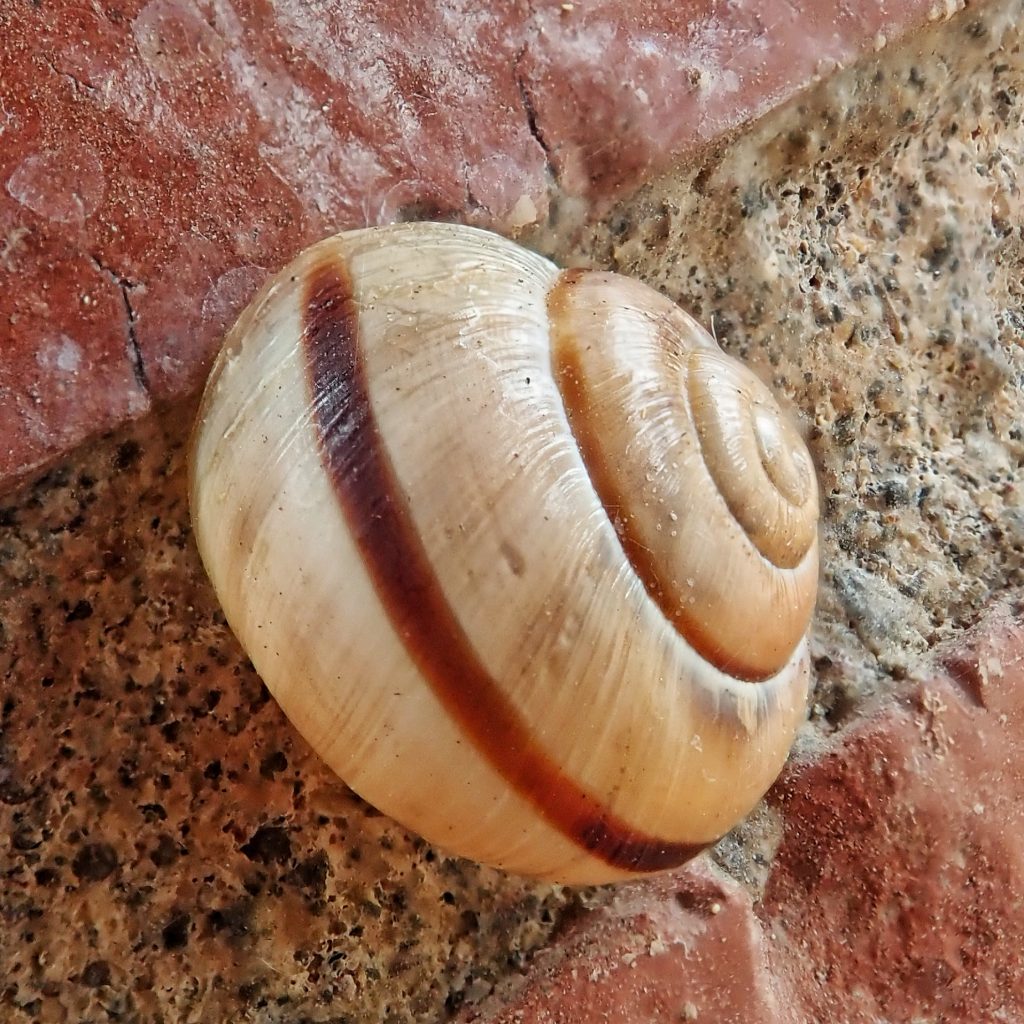
Cepaea nemoralis is one of the snails that uses a ‘love dart’ during courtship. This is a calcareous (in this species- other genera have love darts made of chitin or cartilage) shaft, with a species specific shape (see here for some of the wicked ones), that is coated with pheromone rich mucus designed to make the female organs of their hermaphroditic partner more receptive to the retention of their sperm, which is jabbed into the prospective mate, whilst said mate is spearing them with a lance of their own. Yikes! It had always been thought that these darts were harmless to their recipient, but a study a few years ago (Kimura/Chiba; 2015) found that stabbed snails lived only 3/4 as long on average as the unstabbed ones, and clutch size dropped roughly 10% after the initial darting, and almost 30% over their lifetime. More study needs to be done to understand exactly what other benefits darting conveys, but it seems clear as to why snails have evolved away from this ‘stab and be stabbed’ form of courtship.
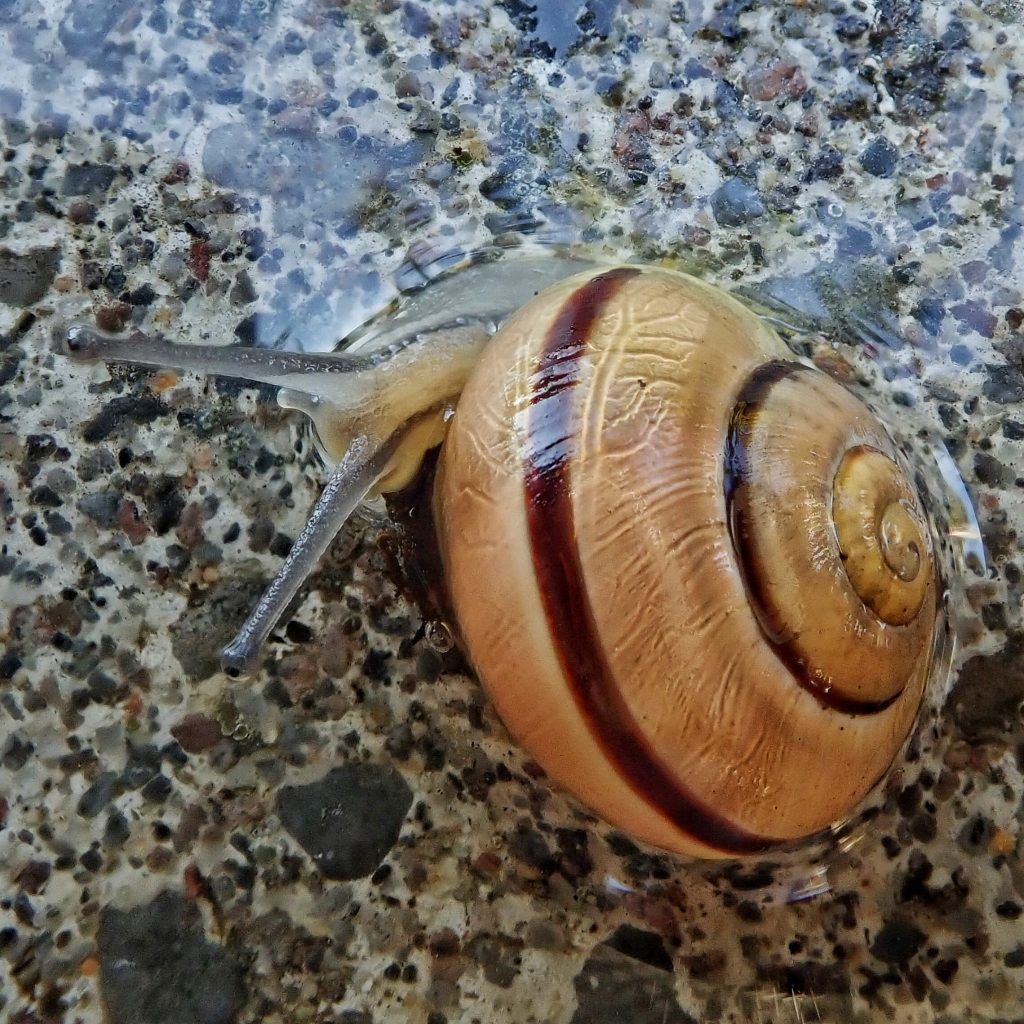
Grove Snails can be garden/agricultural pests, but their preference is for eating decaying organic material, and possibly a lack of such material in a well tended garden/field contributes to their depredation of living plants. They are certainly not as problematic as Cornu aspersum (Brown Garden Snails), another and more voracious European import.
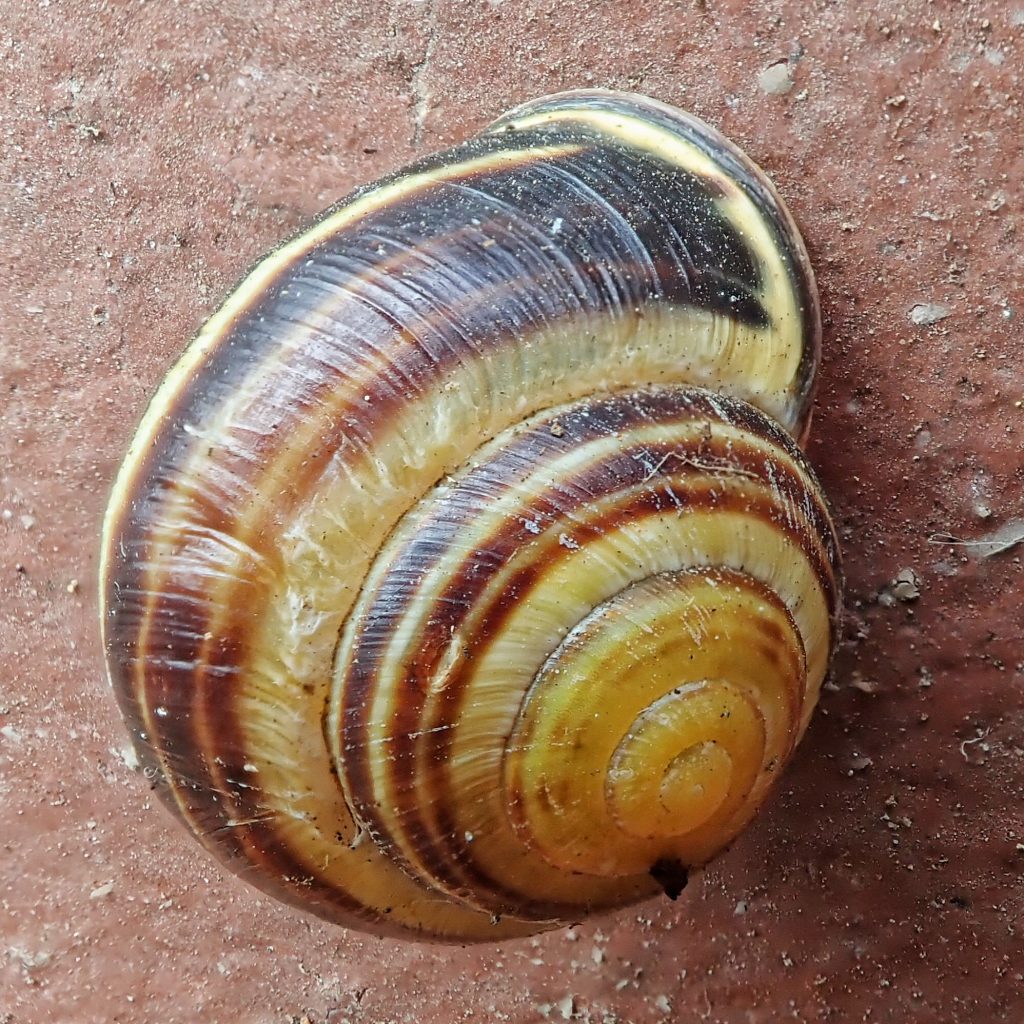
Description-Medium to large (up to 32mm in diameter and 25mm spire height) snail with a globose shell and an obtuse spire, in varying shades and combinations of yellow, brown, and red, usually (but not always) with 1-5 contrasting bands; mature snails have a solid, deflected lip that is almost always dark red to brown; either lacks or has only a minor and poorly defined umbilicus.
Similar species– Cepaea hortensis will almost always have a white aperture lip at maturity; our native Monadenia fidelis and M. chaceana have a deep, well defined umbilicus, and are much less globose.
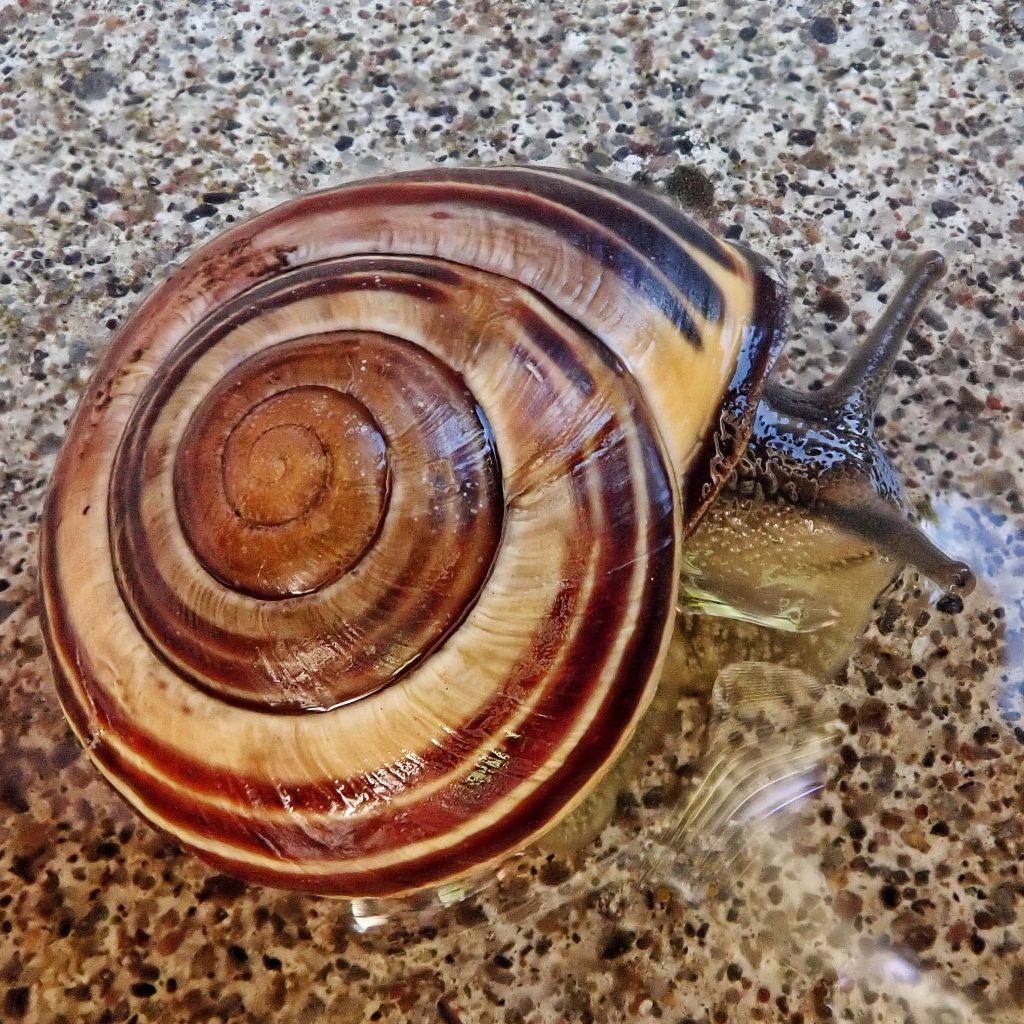
Habitat-Tends to be in damp environments with lots of vegetation, usually in urban areas near to where they’ve been introduced.
Range-European native; thus far only found in the northeastern and northwestern portions of North America; for now it seems to only be established in western BC, western Washington, and around Portland, Oregon in our region, though this will certainly change.
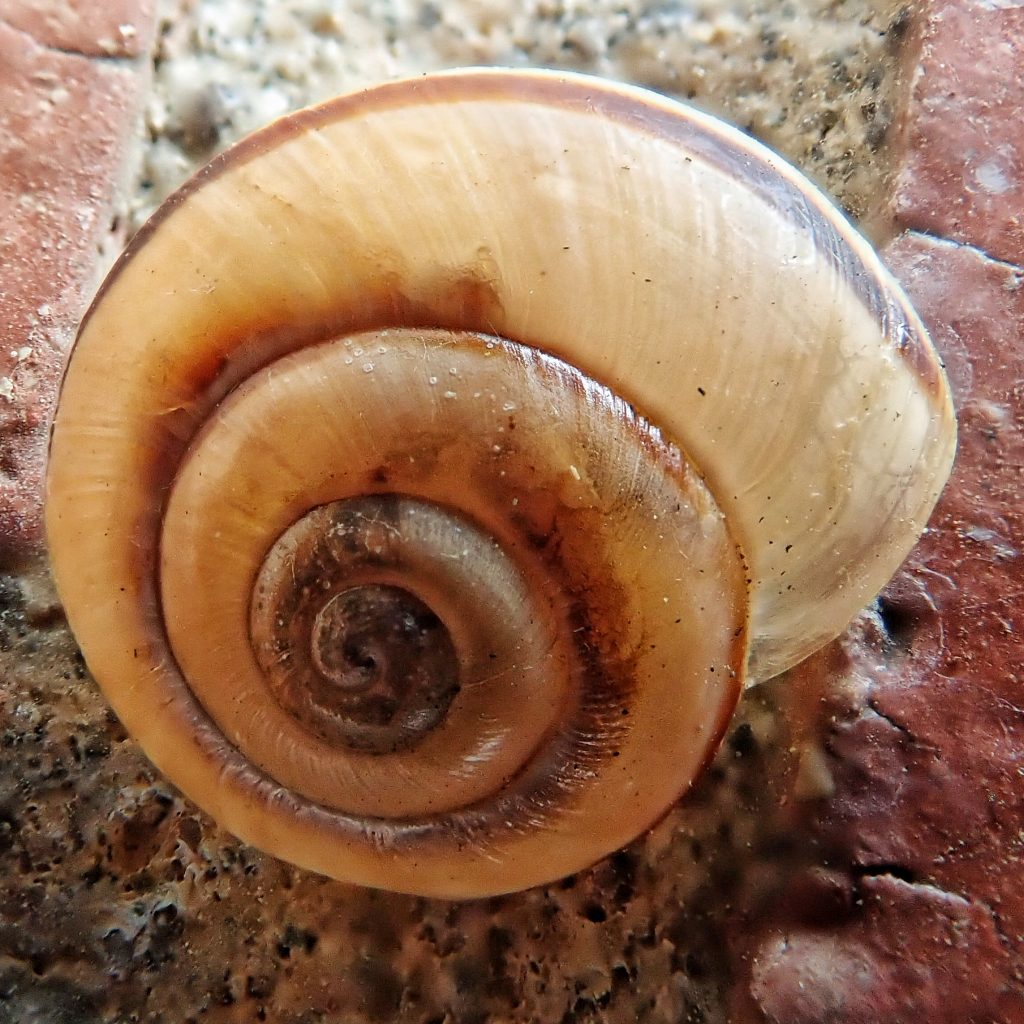
Eats-Seems to prefer dead organic matter including dead leaves and other vegetation, and carrion, but will also consume living leaves and other greenery, although they seem to avoid legumes altogether; they also consume some small insects, although that may be accidental bycatch.
Eaten by-Some flies in Phoridae use them as larval hosts, and they are probably parasitized by Chalcidoid wasps in the genera Novitzkyanus and Brachymeria; birds, especially thrushes and corvids, prey on them, as do raccoons, opossums, skunks, and other smaller carnivorous mammals.
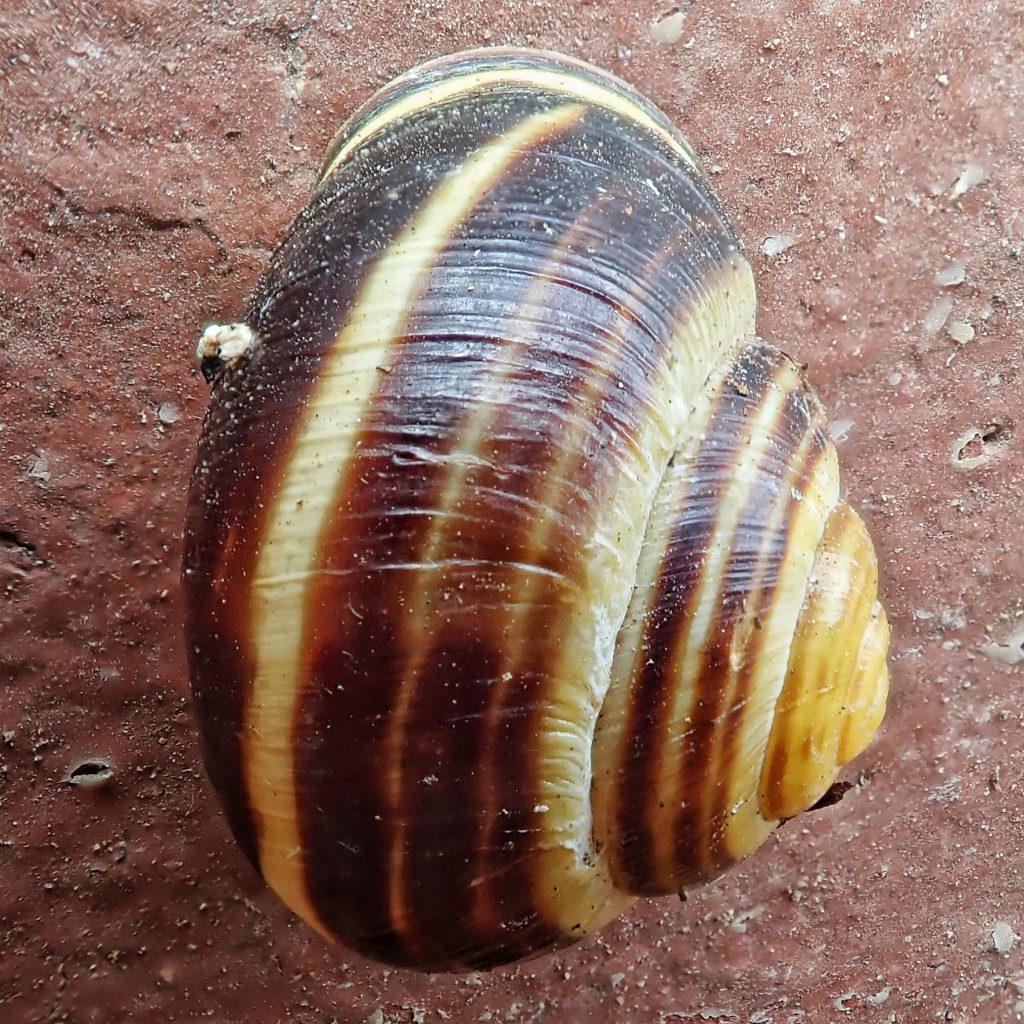
Reproduction-Though they are hermaphroditic, cross fertilization is required; breeding may occur from mid spring into early fall; this is one of the snails that uses love darts during courtship; usually has multiple matings per brood; sperm may be stored for extended periods, and fertile eggs from a given mating may be laid over the course of several months; 30-80 eggs are laid over a 1-3 day span in a small depression that is then covered; gestation is 15-20 days, depending on temperature and humidity; can grow to adulthood in a single year, but usually requires 2-3 years of development; may live up to 6 years in the wild.
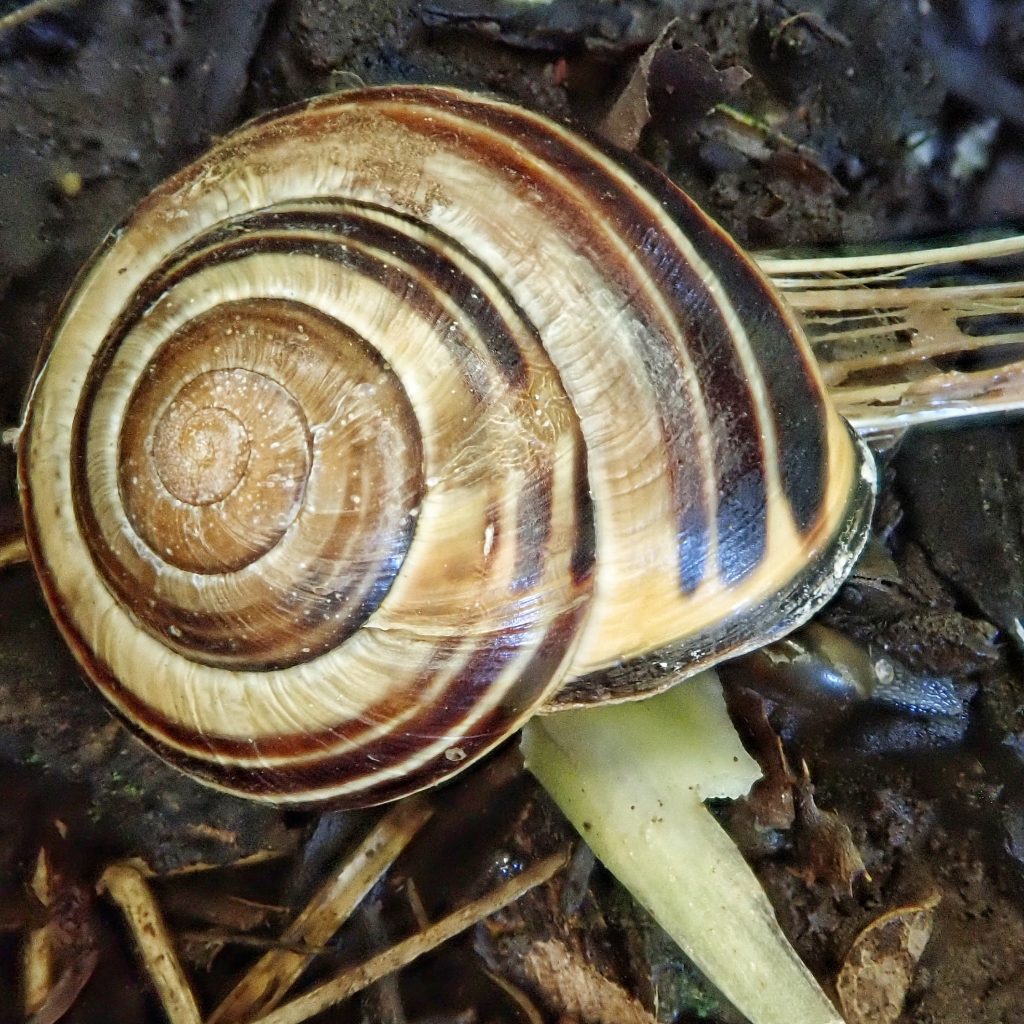
Adults active– Year around, though less so during dry, cold periods, and strictly nocturnal during the warmer months.
Etymology of names– Cepaea is probably from the Greek word for garden, one of the common habitats for members of this genus. The specific epithet nemoralis is from the Greek for ‘of a wood/grove’, indicating that this species is more common in woodlands. This is also where the common name Grove Snail comes from.
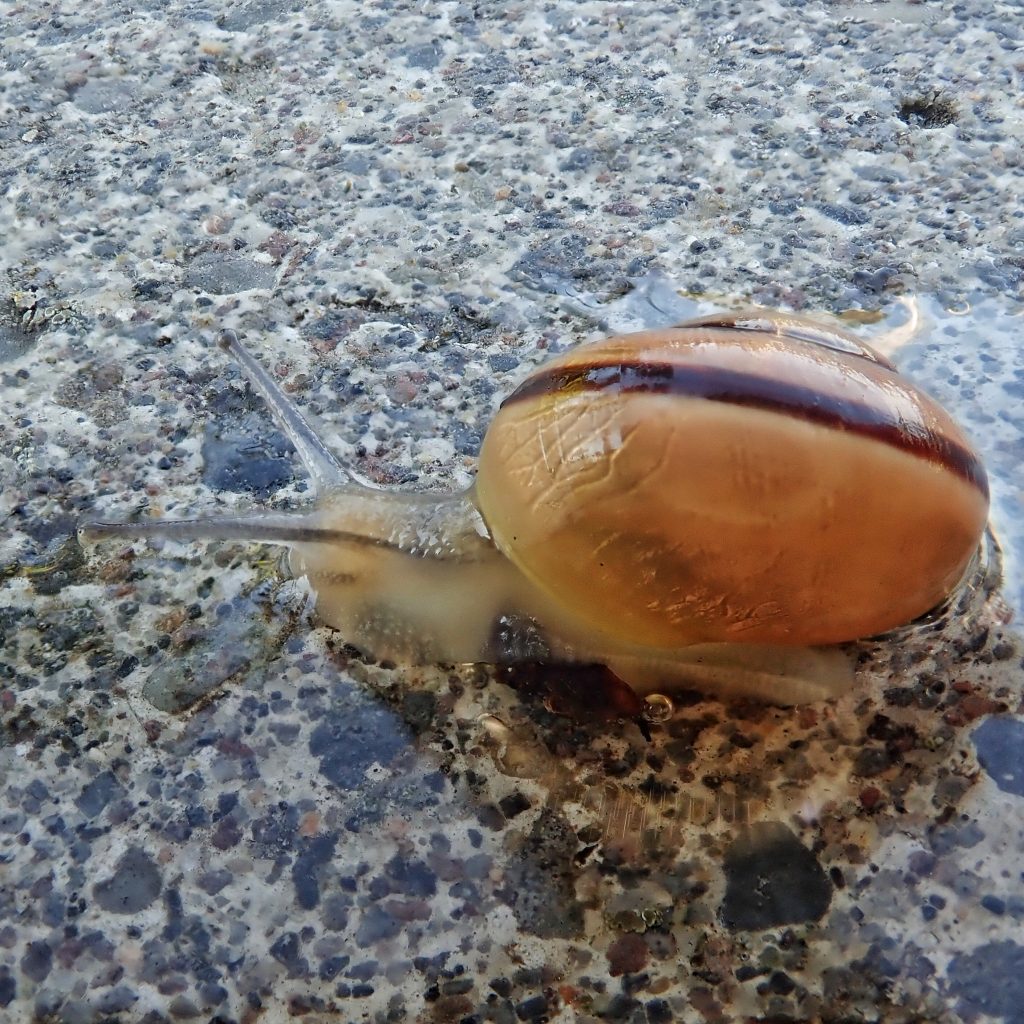
http://www.molluscs.at/gastropoda/index.html?/gastropoda/morphology/love_dart.html
https://animaldiversity.org/accounts/Cepaea_nemoralis/
https://idtools.org/id/mollusc/factsheet.php?name=Cepaea%20nemoralis
https://www.nature.com/articles/s41437-019-0189-z
https://royalsocietypublishing.org/doi/pdf/10.1098/rspb.2014.3063
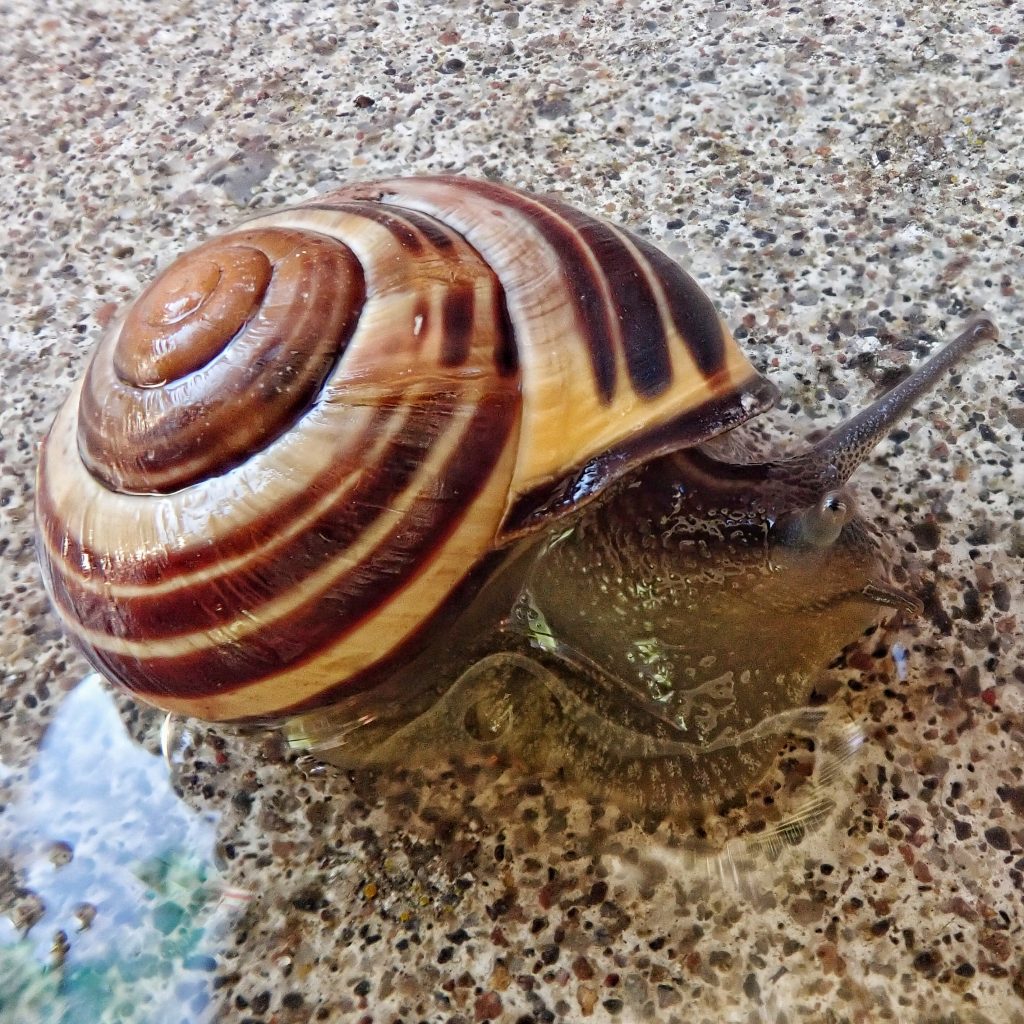
These snails are so beautiful. On occasion I have seen them empty in the garden and have wanted to wash them off and make a necklace out of them. They would be so pretty!
Yes it would! Sounds like a lovely idea!
https://www.ncbi.nlm.nih.gov/pmc/articles/PMC3689469/
A quick Google search produced the above link to a review and recent study of the role of predation by birds in maintaining the polymorphism. The authors also refer to the original work by Cain and Shepard (1954), which I recall from grad school, in which they described “anvils” – large stones used by British thrushes for breaking the snail shells.
Thanks Ken! I actually read that paper, but didn’t link to it because it was referenced in the paper to which I did provide a link, the one in nature.com.
when I graduated in 1960 I came to vancouver and as a present my family bought me a necklace of these snail shells… I bought another necklace about 10 years ago in the jungle in the mountains in Cuba… i see them in my garden here in vancouver… so beautiful
Very cool! Thank you for sharing that!
I’m pretty sure I just found one (the shell anyway) in Burien Washington. I sàw a few the other day when it was raining also. Right across the street from the burien library.
Cool! They are a very pretty snail!